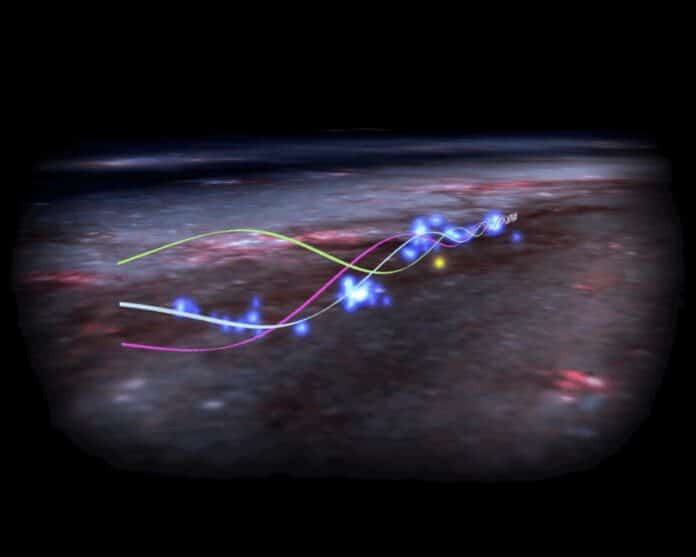The Radcliffe Wave is a lengthy, wavy chain of thick gas clouds that includes our Sun. Scientists found this wavy texture using a method known as 3D dust mapping. They weren’t initially sure if it was genuinely moving like a wave.
A recent study demonstrates that the Radcliffe Wave oscillates through space, drifting away from our galaxy’s center and traveling up and down through the Galactic plane. Simply put, it moves through space-time like the wave in a stadium full of screaming spectators and appears like one.
Scientists could determine this by tracking the path of nascent stars born within these gas clouds. They verified that the Radcliffe Wave is indeed waving by monitoring the motion of the gas in the region where these stars formed.
The European Space Agency’s Gaia mission data and a “3D Dust Mapping” method allowed scientists to identify this wavy pattern in the galaxy for the first time in 2020. This finding would not have been feasible without them.
Center for Astrophysics researcher Catherine Zucker — then a Ph.D. student at Harvard, said, “It’s the largest coherent structure that we know of, and it’s close to us. It’s been there the whole time. We didn’t know about it, because we couldn’t build these high-resolution models of the distribution of gaseous clouds near the sun, in 3D.”
Using a 3D dust map, scientists established the existence of the Radcliffe Wave in 2020, but they could not determine if it was traveling at the time. Nonetheless, by 2022, scientists could monitor the movements of newborn star clusters inside the wave because of updated data from the Gaia mission. They used this information to conclude that the entire structure is moving and acting like what physicists call a “traveling wave.”
A traveling wave is comparable to the “wave” effect produced when spectators stand and sit in succession at a sporting event. Similarly, the star clusters along the Radcliffe Wave oscillate, forming a pattern that passes through our neighborhood in space.
“Similar to how fans in a stadium are being pulled back to their seats by the Earth’s gravity, the Radcliffe Wave oscillates due to the gravity of the Milky Way,” Konietzka said.
Researchers have accomplished a significant feat by comprehending the behavior of the Radcliffe Wave, which spans 9,000 light-years and approaches our Sun by as much as 500 light-years. However, this raises more complex questions. Scientists still need to find out what produced the Radcliffe Wave or why it moves the way it does despite being aware of its presence and movement. These mysteries present fascinating riddles for further investigation.
“Now we can test all these different theories about why the wave formed in the first place,” Zucker said.
“Those theories range from explosions of massive stars, called supernovae, to out-of-galaxy disturbances, like a dwarf satellite galaxy colliding with our Milky Way,” Konietzka added.
The discovery of the Radcliffe Wave oscillation raises new questions about the existence of structures comparable to this one in other galaxies, including the Milky Way. The Radcliffe Wave oscillates, suggesting that spiral arms in galaxies may oscillate generally since it appears to be the core of the closest spiral arm in our universe. This suggests that galaxies are even more dynamic than previously thought, with movement like that of waves in their spiral arms, which adds yet another level of intricacy to our knowledge of these cosmic structures.
“The question is, what caused the displacement giving rise to the waving we see?” Goodman said. “And does it happen all over the galaxy? In all galaxies? Does it happen occasionally? Does it happen all the time?”
Journal Reference:
- Konietzka, R., Goodman, A.A., Zucker, C. et al. The Radcliffe Wave is Oscillating. Nature (2024). DOI: 10.1038/s41586-024-07127-3
